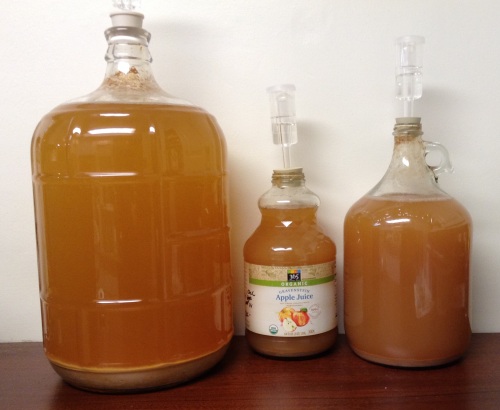You know the thought you get when you visit a cidery, winery, or brewery, the one that says it would be so much fun to do that. You make a little at home already. How difficult could it be to just scale everything up a couple of thousand gallons. “Pshaw,” you say, “It’ll be easy!”
Cidermaking, like everything from circus performing to street sweeping, is a lot harder than it looks. While it’s easy to jump right into a little home hobby production, scaling that up to a sustainable business model takes a lot more than a good forward-spring. Fortunately the Penn State Extension offers lots of help. Last week they hosted an Introduction to Hard Cider Production workshop.
The workshop covered everything from budgeting to making to marketing. While nothing was covered in depth, every discussion was informative and candid. The talks included:
Assessment of Cider Market Potential in the Eastern U.S.
Evaluation of Traditional American & European Apple Varieties for Cider Fermentation
Cider Apple Budget Tools
Hard Cider Sensory Analysis & Networking Opportunity
Hard Cider Production—Fermentation, Sanitation, Stabilization
Design & Establishment of a Hard Cider Orchard
“Apple Entrepreneurship” & Long-term Prospects for Hard Ciders in the U.S.
I learned something in every session, for instance:
- Even though cider is a growing market, there is still no objective or centralized source of cider market data. Much of the data presented was gleaned from general internet searches of cidermaker websites.
- For all its recent growth, hard cider is still less than 1% of US beer market.
- 95% of the cider market are industrial producers (think Woodchuck or Angry Orchard). 5% are craft makers.
- It’s only been since 2012 that per capita cider consumption in the US has exceeded one gallon per year.
- While the belief is that dwarf and semi-dwarf trees produce larger, more watery apples than standard apple trees, that’s not true. They produce the same fruit, but mature faster (I’m still looking for a few studies on this, but all the scientists there agreed on this).
- You might make a great product, but if you can’t understand, create, and adhere to a budget, you will fail.
The workshop highlighted a few areas I’m particularly weak in and need to develop, including my appreciation of orcharding and its influence on cider, my understanding of the business of cidermaking, and my tasting sensitivity and vocabulary.

For instance, you’ll notice the glasses are full, but the page is empty.




